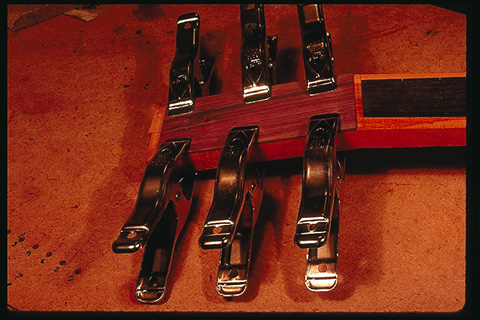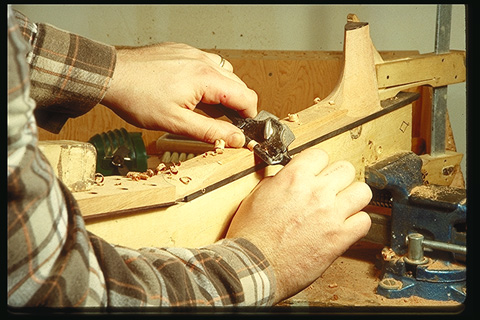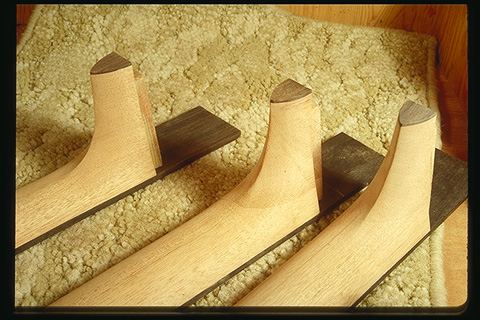




The neck itself, is shaped to the appropriate curvature. The curve and thickness of the neck depend upon the player's requirements.




| The shape and feel of the neck are critical to the playability of the instrument. The human hand is extraordinarily sensitive to minute changes in dimensions and curvature. |  |
| First, the mahogany heel block is glued to the neck blank, also mahogany. |  |
| The rosewood or ebony faceplate is glued to the front of the head. |  |
| The heel cap is glued to the heel block and the shape of the heel roughed out. |  |
| Next, the junction of the neck to the peghead is carved. It is important to maintain the structural integrity of the neck. Since this area is above the truss rod adjustment area, a neck carved too thin can cause bending due to string tension. |  |
|
The neck itself, is shaped to the appropriate curvature. The curve and thickness of the neck depend upon the player's requirements. |
 |
| The fingerboard is glued to the neck, after which, the final shaping is completed. |  |
| For steel string guitars, it is typical for the fingerboard to be curved. Here the curvature is put into the ebony fingerboard. |  |
 |